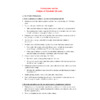|
|
Search Resources (34 Results)
 |
|
Outline | Approved: A year ago | 2.17 MB | Comments: 0
...way to group organisms on Earth. Based...
...oxygen. Only those organisms that can grow...
...oxygen – anaerobic organisms – were able...
...able to live. Organisms that convert solar...
...called phototrophs. Phototrophic organisms that required an...
...thus the 1st organisms would have flourished...
...that these 1st organisms – the 1st...
...that the 1st organisms that appeared on...
...secreted by the organisms, together with some...
...Interactions among the organisms that populate a...
...3638550457909200Prokaryotes are unicellular organisms that lack organelles...
...species enables the organisms to attach to...
...wall structure. Gram-positive organisms have a thick...
...which brings the organisms into contact with...
...cycles, decomposing dead organisms, & growing &...
...multiplying inside living organisms, including humans. Different...
...other organism. Pathogenic organisms evolved alongside humans....
...growth of other organisms. One of the...
...biological systems, living organisms, or derivatives thereof,...
...were the 1st organisms on Earth. These...
...13.3 Protists Eukaryotic organisms that did not...
...relationships with other organisms & these relationships...
...live on dead organisms or their wastes...
...ways as multicellular organisms. Protists are composed...
...(such as other organisms) to obtain nutrition....
...nutrients from dead organisms, or their organic...
...be monophyletic All organisms within each supergroup...
...other than to organisms outside that group....
...must infect other organisms to survive &...
...for many other organisms. In some cases,...
...nutrition for other organisms by carbon fixation....
...the survival of organisms ranging from bacteria...
...only for sea-dwelling organisms. Certain anaerobic species...
...protists are saprobes, organisms that feed on...
...feed on dead organisms or the waste...
...matter produced by organisms (saprophyte is an...
...sustenance for other organisms along the food...
...up” in dead organisms. 13.4 Fungi The...
...variety of living organisms collectively referred to...
...once considered plant-like organisms; however, DNA comparisons...
...carbon. Some fungal organisms multiply only asexually,...
...interact with other organisms, forming mutually beneficial...
...fungi are multicellular organisms. They display 2...
...are mostly saprobes, organisms that derive nutrients...
...humans & the organisms they depend on...
...symbiosis with photosynthetic organisms They are major...
...be incomplete without organisms that decompose organic...
...trapped in dead organisms. Fungi are particularly...
...that few other organisms are able to...
...& pathogenic with organisms from the other...
...are important pioneer organisms that colonize rock...
...important model research organisms including the red...
| N/A |
66
|
Amber Mason Turner
|
 |
|
Lecture Notes | Approved: 6 years ago | 46.1 kB | Comments: 0
...long noted that organisms are well suited...
...the adaptations of organisms as evidence that...
...or traces of organisms from the past...
...a succession of organisms have populated Earth...
...act on living organisms, producing substantial change...
...innate drive of organisms to increasing complexity....
...the adaptations of organisms and the unity...
...those of Europe. Organisms from temperate regions...
...more closely resembled organisms from the tropics...
...fossils of ocean organisms high in the...
...by the unusual organisms found there. Darwin...
...adaptations, characteristics of organisms that enhance their...
...with modification. All organisms are related through...
...As a result, organisms share many characteristics,...
...recognized that some organisms resemble each other...
...tree of life. Organisms at various taxonomic...
...the match between organisms and their environment....
...the match between organisms and their environment....
...interactions between individual organisms and their environment,...
...are passed from organisms to their offspring....
...drug-resistant pathogens (disease-causing organisms). The evolution of...
...characteristics of different organisms. Descent with modification...
...obvious in adult organisms may become evident...
...ancestors. Similarities among organisms can also be...
...origin of life. Organisms as dissimilar as...
...also common for organisms to have genes...
...among groups of organisms. Evolutionary trees are...
...the biology of organisms. Distantly related organisms...
...organisms. Distantly related organisms may resemble each...
...showing that past organisms differed from present-day...
...differed from present-day organisms and that many...
...major groups of organisms and the evolutionary...
...geographic distribution of organisms is influenced by...
...various types of organisms might be found....
| N/A |
165
|
johaneswijaya
|
 |
|
Lecture Notes | Approved: 6 years ago | 44.31 kB | Comments: 0
...of all the organisms that live in...
...Photosynthetic and chemosynthetic organisms assimilate inorganic elements...
...animals and by organisms such as bacteria...
...wastes and dead organisms. Because energy, unlike...
...and other photosynthetic organisms convert solar energy...
...determine how many organisms a habitat can...
...moving water. Like organisms, ecosystems are open...
...support all other organisms. Most autotrophs are...
...autotrophs are photosynthetic organisms that use light...
...remains of dead organisms, feces, fallen leaves,...
...prokaryotes and fungi, organisms that secrete enzymes...
...actually strikes photosynthetic organisms. Only certain wavelengths...
...that reaches photosynthetic organisms is converted to...
...respiration of all organisms in the system...
...efficiencies differ among organisms. Birds and mammals...
...mass of all organisms) in one trophic...
...for use by organisms. Reservoir A includes...
...nutrients in living organisms and in detritus....
...available to other organisms when consumers feed...
...reservoir as dead organisms and are buried...
...years. Some fossilized organisms become coal, oil,...
...for use by organisms and returned to...
...for use by organisms, but may gradually...
...essential to all organisms, and its availability...
...oceans, and in organisms. Key processes: Weathering...
...The use of organisms to detoxify polluted...
...biological augmentation uses organisms to add essential...
| N/A |
215
|
johaneswijaya
|
 |
|
Lecture Notes | Approved: 6 years ago | 41.94 kB | Comments: 0
...the interactions between organisms and their environment....
...scales from single organisms to the globe....
...have long observed organisms in nature and...
...the distribution of organisms on land and...
...a community of organisms under a fallen...
...phytoplankton and the organisms that feed on...
...large stone shelters organisms, buffering them from...
...and abundance of organisms. Biotic or living...
...and abundance of organisms. Long-term climate change...
...freshwater, and terrestrial organisms, consistent with the...
...a community, removing organisms from it and...
...the heat. Desert organisms display adaptations that...
...respiration by these organisms consumes huge amounts...
...and by photosynthetic organisms, so light intensity...
...by communities of organisms called benthos. A...
...shallow and deep-water organisms. In aquatic biomes,...
...and killing aquatic organisms. Damming and flood...
...intertidal areas. Many organisms live only at...
...receives no sunlight. Organisms in the very...
...Unique assemblages of organisms are associated with...
...52.4 Interactions between organisms and the environment...
...Through natural selection, organisms adapt to their...
...the distribution of organisms. Biogeography is the...
...and abundance of organisms. The red kangaroo...
...global distribution of organisms. The movement of...
...The dispersal of organisms is crucial to...
...considered successful, the organisms must not only...
...the distribution of organisms. Sometimes organisms do...
...of organisms. Sometimes organisms do not occupy...
...the distribution of organisms. Negative interactions with...
...interactions with other organisms in the form...
...the ability of organisms to survive and...
...pathogens, and competing organisms can act as...
...the distribution of organisms. The global distribution...
...global distribution of organisms broadly reflects the...
...accentuate regional distinctions. Organisms can temporarily avoid...
...the distribution of organisms because of its...
...above 450C. Most organisms function best within...
...that range. Some organisms (such as thermophilic...
...tide recedes. Terrestrial organisms face a nearly...
...conserve water. Desert organisms, for example, have...
...water balance of organisms through osmosis. Most...
...osmosis. Most aquatic organisms have a limited...
...distribution of photosynthetic organisms. Every meter of...
...the survival of organisms. In desert ecosystems,...
...the distribution of organisms directly, through extreme...
...influences the resident organisms. In freshwater and...
...substrate determines the organisms that can attach...
| N/A |
205
|
johaneswijaya
|
 |
|
Lecture Notes | Approved: 6 years ago | 34.06 kB | Comments: 0
Category: Botany | Downloaded: 0
...impressions left by organisms that lived in...
...bodies of dead organisms settle along with...
...tissues of dead organisms, replace its organic...
...a fossil. These organisms have been trapped...
...the fact that organisms accumulate radioactive isotopes...
...present in living organisms in the same...
...present in living organisms to any significant...
...in proteins. While organisms only synthesize L-amino...
...evolutionary arena and organisms in different biogeographic...
...have made some organisms lacking hard parts...
...eras. Impacting land organisms as well, 8...
...available to marine organisms. The Cretaceous mass...
...broader groups of organisms. Under the binomial...
...a set of organisms. However, this chronology...
...and proteins among organisms should provide insights...
| N/A |
188
|
johaneswijaya
|
 |
|
Lecture Notes | Approved: 6 years ago | 34.58 kB | Comments: 0
...were the earliest organisms on Earth and...
...environment are chemotrophs. Organisms that need only...
...source are autotrophs. Organisms that require at...
...Photoautotrophs are photosynthetic organisms that harness light...
...nutrients from dead organisms, and parasites, which...
...Some of these organisms (such as Lactobacillus)...
...available to other organisms for incorporation into...
...self-sufficient of all organisms. They require only...
...the very first organisms may have been...
...oxidizing one. Some organisms took advantage of...
...(SSU-rRNA) because all organisms have ribosomes. Woese...
...are the only organisms able to metabolize...
...compounds that other organisms can use to...
...with complementary metabolisms. Organisms involved in an...
...The application of organisms to remove pollutants...
| N/A |
203
|
Guest
|
 |
|
Lecture Notes | Approved: 6 years ago | 402.79 kB | Comments: 0
...nerve cells. Biological Organisms Show Great Diversity...
...system for classifying organisms. Taxonomy - the...
...classifying and naming organisms. Carolus Linnaeus (18th...
...a group of organisms that can interbreed...
...consist of prokaryotes, organisms with no true...
...consists of eukaryotes, organisms with a discrete...
...and simple multicellular organisms having nuclei, and...
...are complex multicellular organisms having tissues and...
...Kingdom Fungi – Organisms with cell walls...
...– Complex multicellular organisms that must eat...
...must eat other organisms for nourishment. No...
...relationships with other organisms, defense against pathogens...
...by eating other organisms (ultimate source of...
...nerve cells. Biological Organisms Show Great Diversity...
...system for classifying organisms. Taxonomy - the...
...classifying and naming organisms. Carolus Linnaeus (18th...
...a group of organisms that can interbreed...
...consist of prokaryotes, organisms with no true...
...consists of eukaryotes, organisms with a discrete...
...and simple multicellular organisms having nuclei, and...
...are complex multicellular organisms having tissues and...
...Kingdom Fungi – Organisms with cell walls...
...– Complex multicellular organisms that must eat...
...must eat other organisms for nourishment. No...
...relationships with other organisms, defense against pathogens...
...by eating other organisms (ultimate source of...
...(such as living organisms), the effective relative...
...(such as living organisms), the typical relative...
...requires water. All organisms that we know...
...In addition, many organisms live in liquid...
...and adhesion; living organisms take advantage of...
...and most biological organisms are more than...
...for most living organisms) the high heat...
...ecosphere and biological organisms heat of vaporization...
...water vapor biological organisms take advantage of...
...requires water. All organisms that we know...
...In addition, many organisms live in liquid...
...and adhesion; living organisms take advantage of...
...and most biological organisms are more than...
...for most living organisms) the high heat...
...ecosphere and biological organisms heat of vaporization...
...water vapor biological organisms take advantage of...
...and/or used by organisms the enantiomers are...
...and/or used by organisms the enantiomers are...
...unlike starch, most organisms cannot digest cellulose...
...reactions in living organisms; most enzymes are...
...unlike starch, most organisms cannot digest cellulose...
...reactions in living organisms; most enzymes are...
...theory All living organisms are composed of...
...of all multicellular organisms all cells are...
...theory All living organisms are composed of...
...of all multicellular organisms all cells are...
...stabilize membrane fluidity organisms control membrane fluidity...
...stabilize membrane fluidity organisms control membrane fluidity...
...metabolism Why do organisms need energy? How...
...energy? How do organisms manage their energy...
...and thermodynamics Living organisms require energy to...
...forms (energy conversion) organisms carry out transformation...
...actively performing work) organisms commonly use chemical...
...is 100% efficient organisms must get a...
...One way that organisms manage their energy...
...answer to how organisms manage their energy...
...reactions in living organisms An enzyme is...
...Metabolism Why do organisms need energy? How...
...energy? How do organisms manage their energy...
...and thermodynamics Living organisms require energy to...
...forms (energy conversion) organisms carry out transformation...
...actively performing work) organisms commonly use chemical...
...their current state, organisms must get a...
...One way that organisms manage their energy...
...answer to how organisms manage their energy...
...reactions in living organisms An enzyme is...
...but not all, organisms can use a...
...used by most organisms nutrients (typically glucose)...
...but not all, organisms can use a...
...used by most organisms nutrients (typically glucose)...
...Chapter 10: Photosynthesis Organisms can be classified...
...from light (these organisms can use chemical...
...molecules from other organisms as a carbon...
...completely on other organisms for energy capture...
...possible groups of organisms based on how...
...Chapter 10: Photosynthesis Organisms can be classified...
...from light (these organisms can use chemical...
...molecules from other organisms as a carbon...
...completely on other organisms for energy capture...
...each, note the organisms that use it....
...all sexually reproducing organisms Leading hypotheses for...
...research with model organisms (mouse, fruit fly,...
...between species hermaphroditic organisms – have both...
...and females some organisms (like fruit flies)...
...research with model organisms (mouse, fruit fly,...
...between species hermaphroditic organisms – have both...
...and females some organisms (like fruit flies)...
...monosomics (2n-1) some organisms may have more...
...universal – all organisms use essentially the...
...among all living organisms) mRNA coding region...
...made by most organisms the mRNA and...
...are one example) organisms have mechanisms to...
...universal – all organisms use essentially the...
...among all living organisms) mRNA coding region...
...made by most organisms the mRNA and...
...are one example) organisms have mechanisms to...
...vary in what organisms can maintain them...
...are found in organisms that grow under...
...sequence differences between organisms (between species, or...
...uses of transgenic organisms as drug makers...
...modeling disease transgenic organisms for basic research...
...disaster genetically engineered organisms that are released...
...studied and classified organisms in their natural...
...is biased toward organisms with hard parts...
...with reasonable speed organisms that lived in...
...in distantly related organisms is called convergent...
...geographical distribution of organisms organisms on islands...
...distribution of organisms organisms on islands are...
...molecular comparisons among organisms the “big test”...
...flaws) distribution of organisms developmental comparisons molecular...
...to complex all organisms were seen as...
...Darwin fossils reveal organisms unlike any living...
...a model of organisms driven toward complexity,...
...studied and classified organisms in their natural...
...is biased toward organisms with hard parts...
...with reasonable speed organisms that lived in...
...in distantly related organisms is called convergent...
...geographical distribution of organisms organisms on islands...
...distribution of organisms organisms on islands are...
...molecular comparisons between organisms the “big test”...
...to complex all organisms were seen as...
...Darwin fossils reveal organisms unlike any living...
...a model of organisms driven toward complexity,...
...selection can produce organisms more suited to...
...selection can produce organisms more suited to...
...define for sexual organisms, hard for asexual...
...hard for asexual organisms and extinct species...
...concept (for sexual organisms) a species is...
...define for sexual organisms, hard for asexual...
...hard for asexual organisms and extinct species...
...concept (for sexual organisms) a species is...
...relative history, dominant organisms, and key events...
...became scarcer, photosynthetic organisms were favored the...
...the first photosynthetic organisms were likely the...
...the first photosynthetic organisms to use H2O...
...is toxic to organisms that don’t have...
...molecules some anaerobic organisms survive (even today)...
...of oxygen some organisms developed means to...
...in types of organisms found in the...
...events, where many organisms apparently died out...
...fossils of multicellular organisms are abundant in...
...groups of marine organisms Silurian period (444-416...
...the remains of organisms that lived in...
...did many marine organisms evidence points to...
...became scarcer, photosynthetic organisms were favored the...
...the first photosynthetic organisms were likely the...
...the first photosynthetic organisms to use H2O...
...is toxic to organisms that don’t have...
...molecules some anaerobic organisms survive (even today)...
...of oxygen some organisms developed means to...
...in types of organisms found in the...
...events, where many organisms apparently died out...
...fossils of multicellular organisms are abundant in...
...groups of marine organisms Silurian period (444-416...
...the remains of organisms that lived in...
...did many marine organisms evidence points to...
...give examples of organisms of each type...
| N/A |
149
|
Guest
|
 |
|
Lecture Notes | Approved: 6 years ago | 305.21 kB | Comments: 0
...structures. 26. Acid-fast organisms such as contain...
...been used, gram-positive organisms are stained __________...
...__________ and gram-negative organisms are stained __________....
...been added, gram-positive organisms are stained __________...
...__________ and gram-negative organisms are stained __________....
...been added, gram-positive organisms are stained __________...
...__________ and gram-negative organisms are stained __________....
...Gram-staining procedure, gram-positive organisms will be stained...
...__________ and gram-negative organisms will be stained...
...Gram-staining procedure, gram-positive organisms will be stained...
...__________ and gram-negative organisms will be stained...
...of cells and organisms are preserved and...
...procedure that divides organisms into two or...
| N/A |
144
|
leylinda01
|
 |
|
Solutions | Approved: 6 years ago | 338.12 kB | Comments: 0
...the simplest of organisms that do not...
...or complex, multicellular organisms. This property is...
...grouped into: A. organisms B. cells C....
...contains photosynthetic multicellular organisms that live on...
...contains nonphotosynthetic multicellular organisms that digest their...
...contains nonphotosynthetic multicellular organisms that digest their...
...Archaea 24. All organisms possess a genetic...
...32. Some living organisms possess RNA as...
...The process where organisms act to maintain...
...________________________________________ 44. All organisms on earth encode...
...the simplest of organisms that do not...
...or complex, multicellular organisms. This property is...
...grouped into: A. organisms B. cells C....
...contains photosynthetic multicellular organisms that live on...
...contains nonphotosynthetic multicellular organisms that digest their...
...contains nonphotosynthetic multicellular organisms that digest their...
...Archaea 24. All organisms possess a genetic...
...32. Some living organisms possess RNA as...
...The process where organisms act to maintain...
...homeostasis 44. All organisms on earth encode...
...needs of individual organisms helps the student...
...occurring among living organisms on earth. 48....
...the needs of organisms or the interactions...
| N/A |
142
|
1realjakesmith
|
 |
|
Solutions | Approved: 6 years ago | 254.61 kB | Comments: 0
...A) decomposing dead organisms B) aiding the...
...DNA D) all organisms are unicellular, made...
...can invade other organisms and cause disease...
...C) disease causing organisms will spontaneously arise...
...with multiple different organisms, such as the...
...the 3 different organisms which caused the...
...to introduce unwanted organisms into food and...
...interpreted as many organisms could cause the...
...of disease causing organisms in the seawater...
...following groups of organisms contains members better...
...oxygen from reaching organisms inside the flask...
...B) kills unwanted organisms C) pasteurization was...
...are single-celled microscopic organisms C) protozoa are...
...molecules that other organisms then use as...
...sunlight, decomposing dead organisms or waste materials,...
...was that no organisms spontaneously generated from...
...therefore the living organisms that grew in...
| N/A |
115
|
1realjakesmith
|
|
Post your homework questions and get free online help from our incredible volunteers
1119 People Browsing
135 Signed Up Today
|